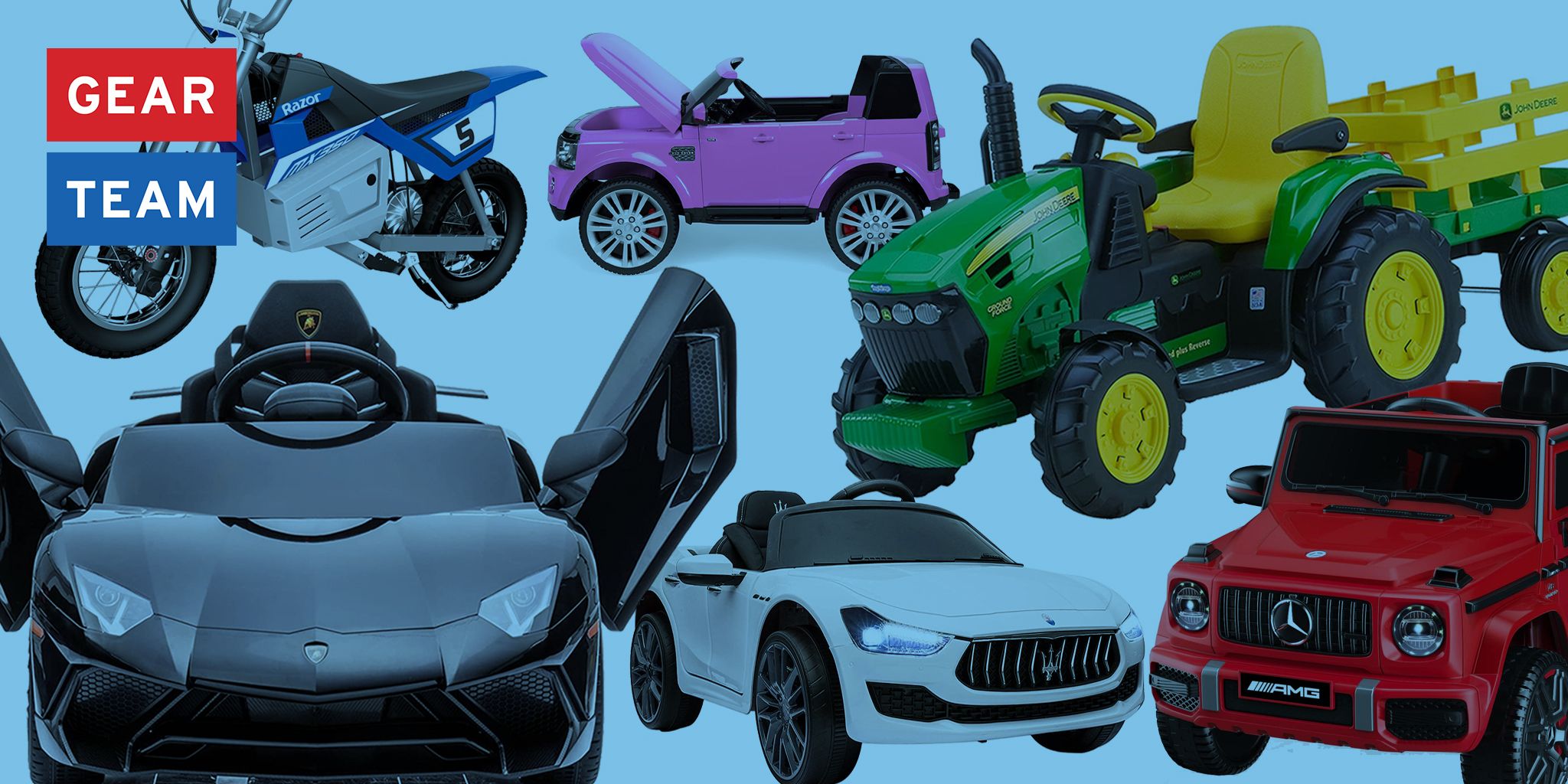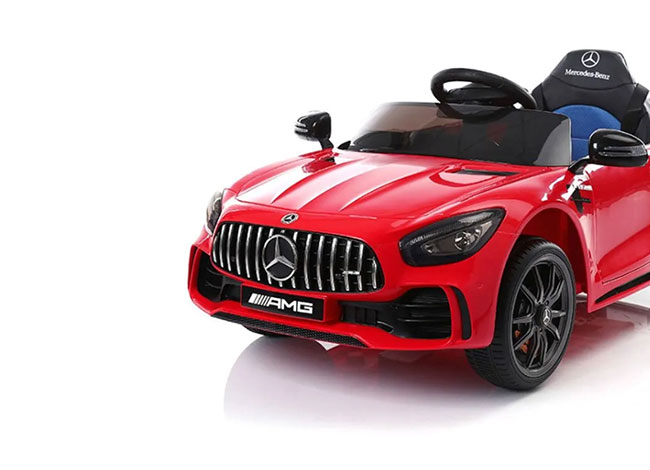Best Advice To Selecting Ride On Toys
Best Advice To Selecting Ride On Toys
Blog Article
What Ride-On Car Safety Features Should I Take Into Consideration? Pros And Cons
When selecting a ride-on car for your child the safety features must be considered to ensure their safety while playing. Here are some essential security features to take into consideration and their pros and cons - Seat Belts -
Pros They are an excellent option to ensure your child is secure while riding in their car. They reduce the chance of him slipping out of the play area or getting removed from the car. They also provide extra protection especially during abrupt stops or turning.
Cons - Some rides-on-cars do not include seat belts. This is particularly true for those that are made for children. Seat belts can also be uncomfortably for children, which can cause children to avoid or not want to use it.
Sturdy Construction
Pros - A vehicle that is built with quality materials and has a solid structure will last longer and resistant to damage. It will also ensure long-term safety and reliability. It is able to withstand the demands of playing and offer security during the use.
Cons - The expense of a solid structure can be high, making them unaffordable to many families. Moreover, the heavier materials may affect the maneuverability and portability of the ride on car.
The Low Center of Gravity
Ride-on cars that have an extremely low center of gravity tend to be less likely to tip over, which could lower the risk of accidents and injuries. They offer greater stability and balance, particularly during turns and maneuvers.
Cons – Ride-ons with low center-of-gravity could sacrifice the ground clearance to enable off-roading. This may restrict the range of riding.
Remote control for parents -
Pros: Remote-controlled ride-on vehicles allow parents to supervise and supervise their children's play. They offer an additional level of safety and parental control. Parents can avoid collisions, aid in an emergency situation, or navigate difficult terrain.
Cons - Remote control for parents can hinder children's autonomy and independence, as they rely heavily on the supervision of their parents and help while playing. Also, remote-controlled cars may cost more than manual versions.
Speed Limiters
Pros - Ride-on vehicles that have speed limiters, or speeds that can be adjusted permit parents to regulate the speed at which they can drive and lower the chance of accidents or collisions. The parents can increase the speed of their ride-on car when their child becomes more confident and skilled.
Cons - Some kids will outgrow lower speed settings and this can cause disappointment and frustration. Some models may not come with speed limiters or require additional features or accessories.
Safe Start Technology -
Pros The Safe Start Technology makes sure that the ride-on vehicles begin and stop without a hitch. This minimizes the chance of sudden jerks that could cause instability or even startle the child. It provides a more relaxing and safer ride.
Cons - Ride-on vehicles with safe start features could be more costly than standard models that do not have this feature. Some children prefer the gradual acceleration deceleration less exciting as immediate stops and starts.
Visibility Enhancements
Pros - Ride-on cars fitted with visible enhancements like functioning headlights, reflective material, or taillights improve visibility. This is especially true in dimly illuminated areas or conditions. They enhance safety by increasing the visibility of vehicles to pedestrians and other vehicles.
Cons - The enhancements to visibility could drain batteries faster or make it more difficult to design the ride-on cars, increasing the chances of malfunctions and maintenance issues.
Think about these security features consider their pros and cons, and choose a ride on vehicle that is designed to prioritize your child's security while still providing an enjoyable and fun play experience. Have a look at the recommended JCB ride on digger for website tips including cars pedal car, kiddies cars, kids electric cars, electric two seater cars, electric two seater cars, toy cars, car toy car toy, toy car, two seater childrens electric cars, toy a car and more. . 
What Assembly And Maintenance Is Required For The Kid's Car Ride-On?
It is typical for children's' ride-on car to require some assembly along with ongoing maintenance, in order to ensure optimal performance and security. These are the most commonly used assembly and care requirements for children's ride-on car.
The majority of ride-on cars are assembled, and will require assembly. Attaching the components like wheels, steering wheels, and seats, according to the instructions of the manufacturer is typical.
Assemble the parts according to the instructions. To complete the assembly, make use of the tools and hardware supplied.
Cleaning -
Regularly cleaning is vital for keeping the ride-on vehicle in top condition and operating effectively. Use a soft sponge, or cloth that has been dampened with water and mild soap to wash the exterior surfaces.
Pay special attention to places that are prone to accumulation like the tires, wheels, and undercarriage. Use a brush or a tooth brush to clean areas that are hard to reach, and also remove hard-to-remove dirt.
Avoid using harsh chemicals, abrasive cleaners or high-pressure water spritzers, because they can harm the paint or electronic components of the ride-on automobile.
Battery Care
To ensure performance and prolong the life of a ride-on battery, it is vital that you take proper care of your battery. Follow these guidelines to take care of your battery -
Charge your battery completely before and after every usage to ensure you get the best from it.
Do not overcharge your battery, or leaving it hooked up to a charger for a long time. Both could damage the battery and decrease its life span.
If not in operation make sure to keep the battery and ride-on cars in a location that is cool, dry and far from extreme temperatures and direct sunlight.
The battery terminals should be examined regularly to check for corrosion and damage. They may also be cleaned with wire bristles or terminal cleaner, should it be required.
Replace the battery in case it does not hold a charge anymore or shows indications that it is damaged or diminished.
Tire Maintenance -
Regularly inspect the tires to find any indications such as wear, damage or the loss of pressure. When needed, use a bicycle air pump or air compressor to inflate tires to the pressure recommended by.
Inspect the tread pattern for evidence of debris or other foreign objects that could cause flats or punctures. Repair or replace damaged tires by removing any obstructions.
Lubricate your wheels and axles to ensure smooth movement.
Periodic repairs and replacements
Despite routine maintenance, ride-on vehicles might require periodic repairs or replacement parts due to wear and wear or damage caused by accident.
Pay attention to signs of malfunction and deterioration such as unusual sounds, power loss or irregular behavior. Contact customer support or follow the specifications of the manufacturer for help in troubleshooting.
To avoid further damage replace worn-out or damaged parts as soon as possible to ensure safety and functionality.
These assembly and maintenance instructions will assist you in keeping your child's ride on car in good condition so that they can enjoy safe and fun playtime. Read the top go here for kids ride on cars for site advice including ride of car, electric ride on cars, electric ride along car, car toy toy, ride of car, childs electric ride on car, ride on digger, electric ride on, kidscars, a toy car and more. . 
What Is The Best Way To Decide A Budget For Your Kid's Ride-On Car Purchase?
Take into consideration factors such as longevity, durability, financial situation, and features when you set the budget. How to set the budget for your ride-on vehicle and get the best value Consider researching average prices
For a start, you must research the cost of a ride-on child's car with the features that you are looking for. Find pricing information on various models by going to online retailers, toy shops, and manufacturer's websites.
What are the Must-Have features?
Choose the features that are crucial for your child's enjoyment as well as safety. The cost of a ride-on vehicle can be affected by features such as realistic sound effects as well as working headlights, seatbelts and functioning lights.
Prioritize features based on your child's preferences and budget restrictions.
Be aware of the durability and long-term sturdiness Consider longevity and durability
Find ride-on vehicles made with durable materials, such as metals and plastics of high-end quality that are able to withstand daily use and outdoor conditions.
For a better idea of the durability and longevity review the product or seek out suggestions from other parents. It may be worth investing in a top-quality ride on car upfront to save on expensive repair or replacement.
Comparing Prices of different retailers
Check prices around and get the best value. Compare prices and special deals at department stores, online retailers and even specialty shops.
Be on the lookout for sales and discounts sales that allow you save money, without sacrificing quality.
Calculate the additional cost
Also, you should consider any other expenses that could be incurred by purchasing a child's ride-on automobile. They could be the cost of shipping, taxes, or even accessories, like spare batteries or safety equipment.
Budget to cover the full cost of the ownership. This includes all accessories or necessary maintenance expenses.
Create a budget that is realistic
Set up a realistic budget based on your financial and research situation. This will align your priorities with your goals. Determine the amount you're willing to shell out for your child's ride-on while considering characteristics such as durability, endurance, or long-term use.
Spending too much on unneeded features or items which don't enhance the experience of your child isn't advised.
Be aware of the long-term value -
A ride-on kids' car that is sturdy, flexible and can grow with your child can be an investment worth it. A high-quality model with many options could prove more valuable in the long run than a less expensive model that is less durable.
If you're looking to buy a child's ride-on vehicle, you should set a price range and compare features, durability and lifespan. This will help you get the best value for your money. Keep your budget in check and put the most important features first to keep your child safe and secure. Check out the top rated McLaren kids car for blog advice including cars pedal car, childrens ride on, car electric ride on, toy ride, car on ride, toy the car, remote control childrens car, childrens electric cars, car toy toy, electric toy car and more. .